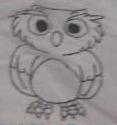The Spatial History Project from Stanford University has done visualizations for several projects, but the one that appealed most to me was the one entitled “Building the New Order: 1938-1945.” It shows the changes in European borders over the course of what became the second world war. The write-up shows both maps and graphs, two of the three visualization types Franco Moretti described in his book Graphs, Maps, Trees. The maps and graphs of Europe have been digitally enhanced to show changes over time fluidly, rather than a series of maps detailing each change singularly. In addition, the methodology of creation is also emphasized in the work because in dealing with data and the digital form, the how is often as important as the why.
But even with these enhancements, without the story and the historical context, they’re just maps and graphs – pretty, interesting, but without much point. They can only show what they are told to show. Moretti makes sure to give explanations to his graphs, maps and trees so these examples are not just floating out there but are grounded in a framework, just like in this European borders project.
As the maps and graphs are enhanced by the framing story, so is the story enhanced by the visualizations. It seems many people are (at least in some regard) visual learners and seeing the story of something can help it become clear (or at least clearer). Our society is a print culture but it is also a visual culture; movies and television shows abound, not to mention YouTube and similar video and image amalgamations. It is said “An image is worth a thousand words.” And it is. But sometimes images need those thousand words so all the aspects of the stories come to life and are understood.
http://www.stanford.edu/group/spatialhistory/cgi-bin/site/pub.php?id=51

Looks good to us.